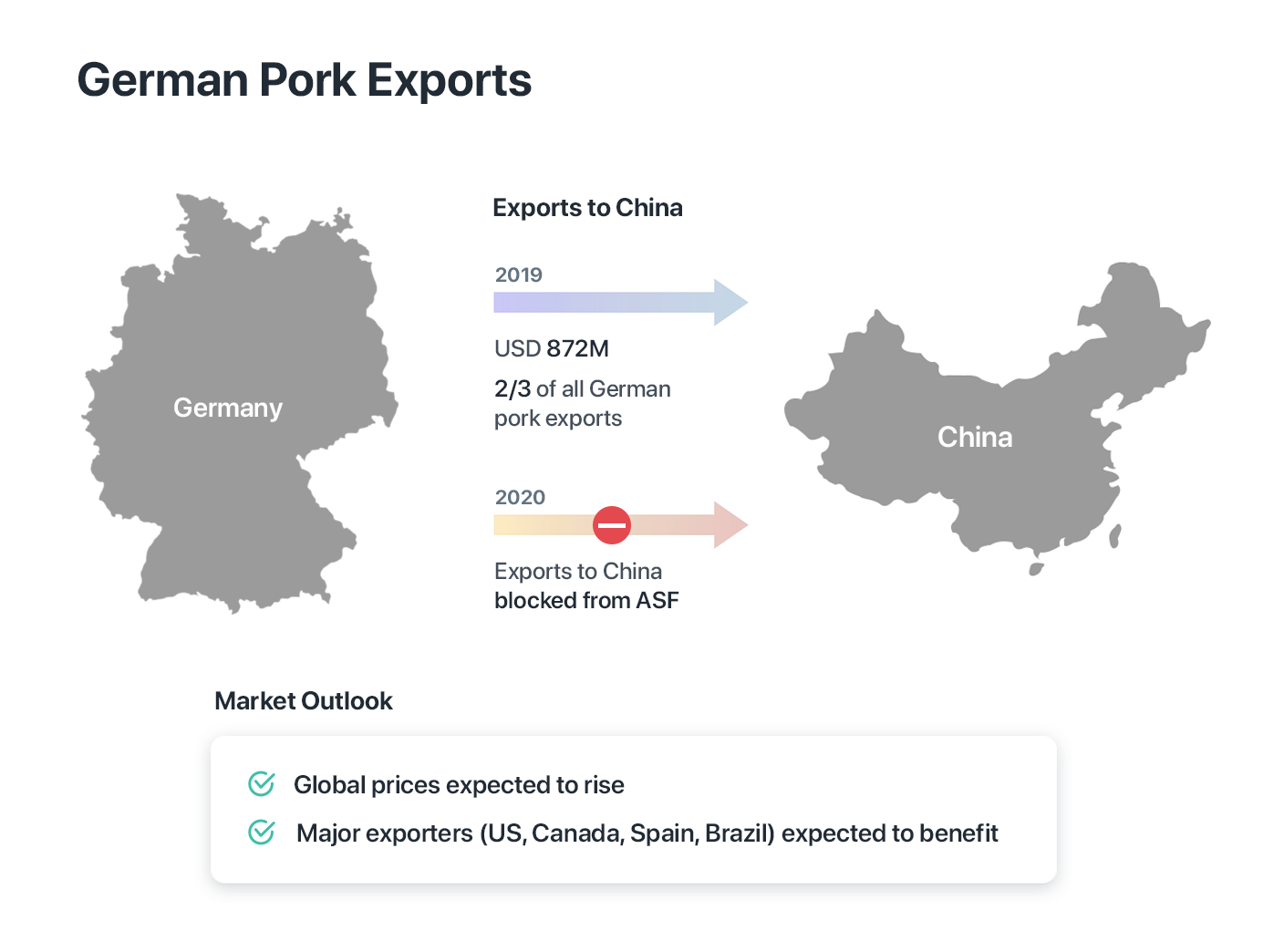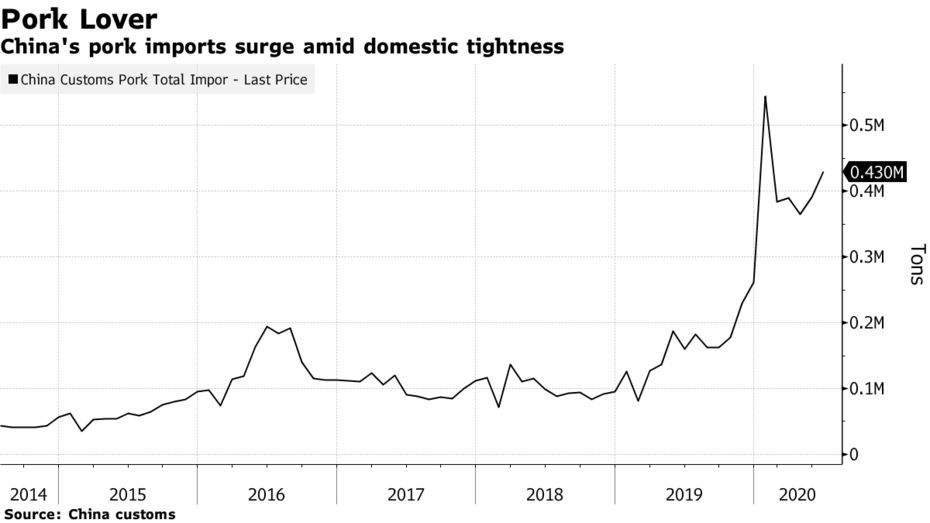China Bans Import of German Pork Over ASF Outbreak
China has banned the import of pork from Germany, the largest producer in the EU, on September 12, following a case of African swine fever (ASF) from a wild boar in the Eastern state of Brandenburg last week. The ban takes effect immediately, meaning that any exports that are already shipped will be sent back or destroyed.
China takes up the biggest portion of pork consumption in the world, approximately 50% of worldwide consumption. German pork exports to China amount to approximately USD 1.2 billion annually including parts not usually consumed by European consumers such as pigs’ ears, tails, and feet.

Politics May Have Played a Role in the Ban
The ban came two days before talks between Chinese President Xi Jinping, German Chancellor Angela Merkel, and EU officials were scheduled surrounding trade issues between the EU and China. Some analysts have speculated that the ban stems from political concerns more than it has to do with the disease as a display of the country’s “coercive diplomacy” tactics. Prior to the ban, there had been evident disapproval from Chinese Foreign Minister Wang Yi on remarks from European officials including German Foreign Minister Heiko Maas’ criticism of the national security law imposed in Hong Kong.
Currently, the German Ministry of Agriculture has said it is in talks with the Chinese government to try to have the ban impact imports only from regions affected by the disease.

China Expected to Search for Alternative Markets
The ban also comes after largest pork producer China has had its own difficulties with ASF and experienced a subsequent 20% drop in production during the first four months of 2020. It is estimated that China’s pig population has decreased by approximately one-third compared to the period before ASF was introduced into the country in 2018. Subsequently, German pork exports to China were at 158K MT worth USD 501.6 million during the first four months of 2020, a 50% increase compared to the same period in 2019 (volume). Approximately 14% of pork imports in China are from Germany.
This provides an opportunity for other major producing countries such as the US, Canada, Spain, and Brazil to expand on exports to China. The US pork industry in particular is in an advantageous position with the Phase One trade deal guaranteeing increases of USD 200 billion in the next two years, including agricultural products. Lean hog futures in the US rose late last week in anticipation of the ban.

Domestic Pork Prices in China (2015-2020). Source: Tridge
However, according to US thinktank PIIE, China’s imports of US agricultural products until July amounted to USD 9.9 billion out of the yearly target of USD 36.6 billion, prompting uncertainties in the fulfillment of the agreement despite China’s “promise” to follow on the Phase One deal in mid-August. In addition, as it takes approximately 10 months for the pigs to be fully marketable, increasing the supply promptly in time might prove to be difficult.
Nevertheless, several exporters have expressed their willingness to increase exports to China. Spain has stated last Friday that its white pig sector is “fully prepared to continue its growth trend in sales of safe and quality pork products to the Chinese market” while the US has announced it is “well-positioned” to export more pork to China.
Sources
- Financial Times. "China bans pork imports from Germany."
- Reuters. "China bans German pork imports after African swine fever case."
- Reuters. "China promised to follow Phase One trade deal, Pompeo says."
- South China Morning Post. "Germany urges withdrawal of Hong Kong security law, seeks access to Uygurs in Xinjiang."
- Bangkok Post. "China bans German pork over swine fever."
- DW. "China bans German pork imports over African swine fever case."
- Financial News (Korea). Translated from Korean. "US profits from Phase One trade deal with Chinese sanctions on German pork."
- Bloomberg. Graph.